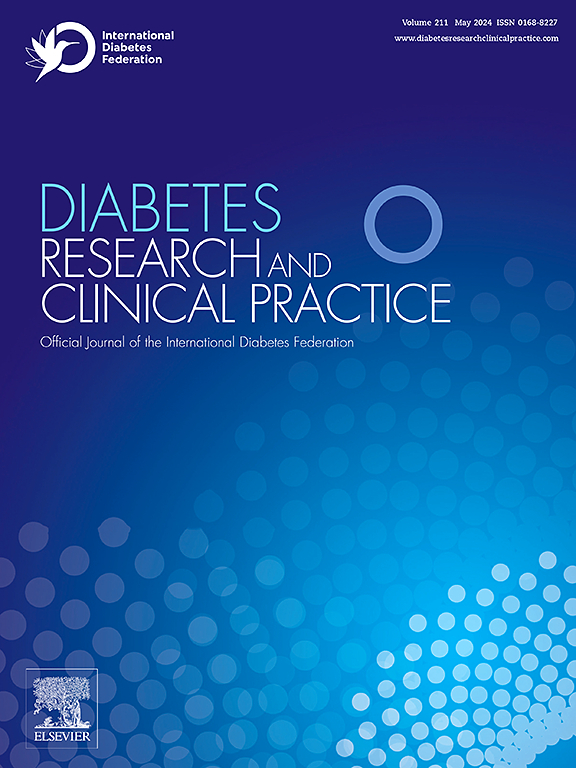The skeletal muscle mass index is a predictor for all-cause mortality in US adults with type 2 diabetes or pre-diabetes
IF 6.1
3区 医学
Q1 ENDOCRINOLOGY & METABOLISM
引用次数: 0
Abstract
Aims
To investigate the relationship between the skeletal muscle mass index (SMI) with all-cause mortality in patients with type 2 diabetes mellitus (T2DM) or pre-diabetes (pre-DM) among American adults.
Methods
This study included 3684 patients with T2DM or pre-DM from the National Health and Nutrition Examination Survey 2011–2018.
Results
Our study revealed an inverse J-shaped relationship between the SMI with all-cause mortality in US adults with T2DM or pre-DM. We determined the inflection points for all-cause mortality in patients with T2DM or pre-DM were 9.07 kg/m2 in males and 7.82 kg/m2 in females. In men, the all-cause mortality decreased by approximately 72 % (HR, 0.28; 95 % CI, 0.09–0.93) for each unit increased in the SMI below the inflection point. In women, all-cause mortality was reduced by 60 % (HR, 0.40; 95 % CI, 0.16–0.91) for each unit increased in SMI below the threshold. A reverse J-shaped SMI-mortality association emerged in patients with T2DM, contrasting with a U-shaped pattern in pre-DM individuals.
Conclusions
An inverse J-shaped association was observed between the SMI with all-cause mortality in in US adults with T2DM or pre-DM. SMI is a valuable tool for predicting all-cause mortality in patients with T2DM or pre-DM.
骨骼肌质量指数是美国2型糖尿病或糖尿病前期成人全因死亡率的预测指标。
目的:探讨美国成人2型糖尿病(T2DM)或糖尿病前期(pre-DM)患者骨骼肌质量指数(SMI)与全因死亡率的关系。方法:本研究纳入2011-2018年全国健康与营养调查中3684例T2DM或前期dm患者。结果:我们的研究揭示了重度精神障碍与美国成人T2DM或前期dm全因死亡率之间的负j型关系。我们确定T2DM或前期dm患者全因死亡率的拐点为男性9.07 kg/m2和女性7.82 kg/m2。在男性中,全因死亡率下降了约72% % (HR, 0.28;95 % CI, 0.09-0.93),每个单位的SMI在拐点以下增加。在女性中,全因死亡率降低了60% % (HR, 0.40;95 % CI, 0.16-0.91), SMI低于阈值时每个单位增加。T2DM患者的smi死亡率呈反j型相关,而糖尿病前期患者则呈u型相关。结论:在美国成年T2DM或前期dm患者中,重度抑郁与全因死亡率呈负j型相关。SMI是预测T2DM或前期dm患者全因死亡率的一个有价值的工具。
本文章由计算机程序翻译,如有差异,请以英文原文为准。
求助全文
约1分钟内获得全文
求助全文
来源期刊

Diabetes research and clinical practice
医学-内分泌学与代谢
CiteScore
10.30
自引率
3.90%
发文量
862
审稿时长
32 days
期刊介绍:
Diabetes Research and Clinical Practice is an international journal for health-care providers and clinically oriented researchers that publishes high-quality original research articles and expert reviews in diabetes and related areas. The role of the journal is to provide a venue for dissemination of knowledge and discussion of topics related to diabetes clinical research and patient care. Topics of focus include translational science, genetics, immunology, nutrition, psychosocial research, epidemiology, prevention, socio-economic research, complications, new treatments, technologies and therapy.
 求助内容:
求助内容: 应助结果提醒方式:
应助结果提醒方式:


